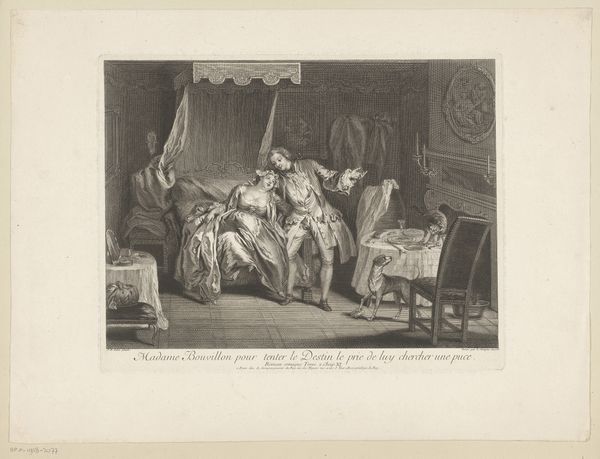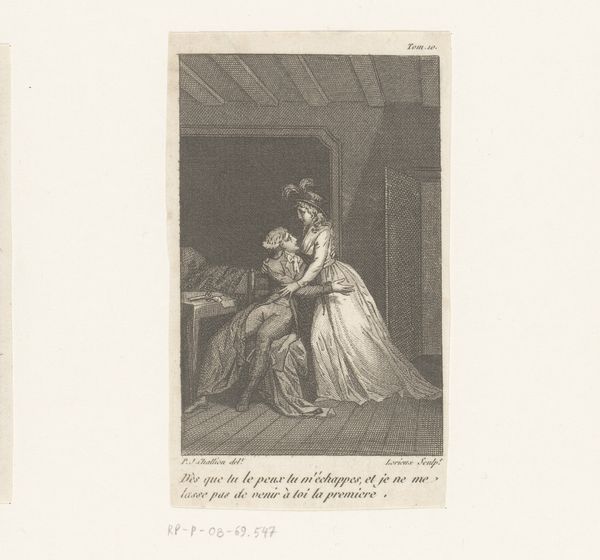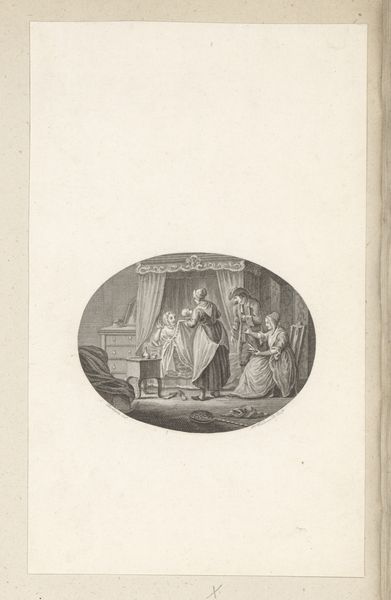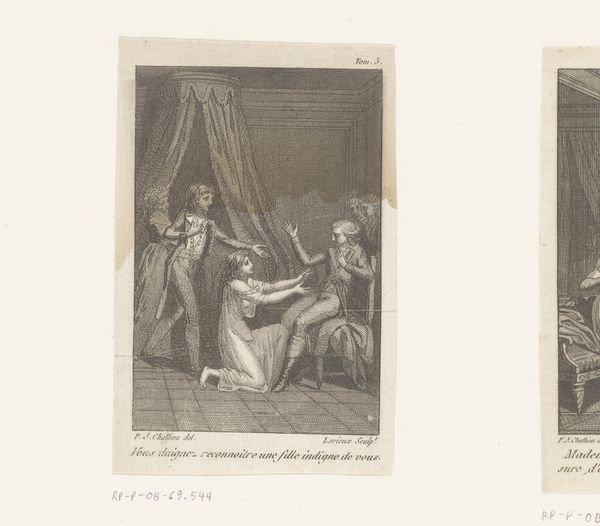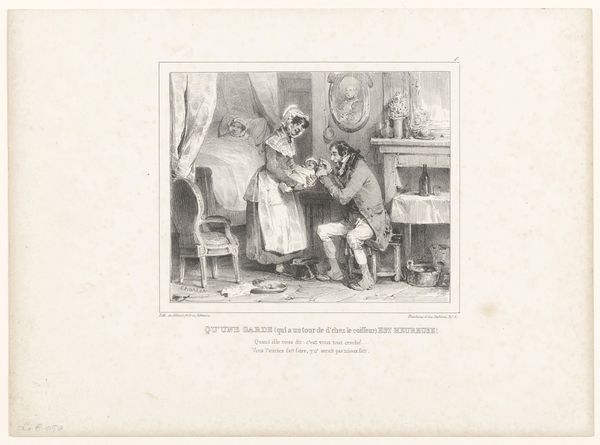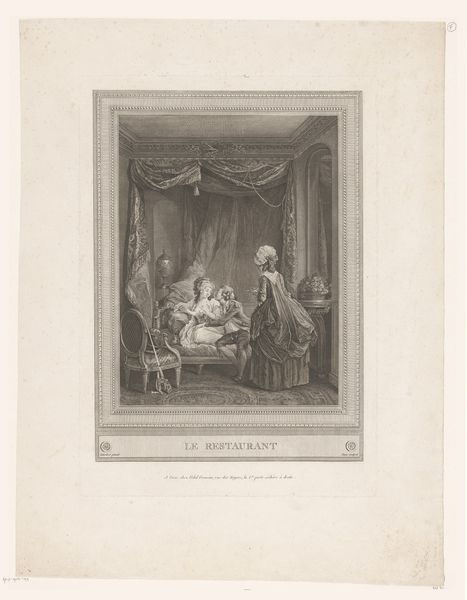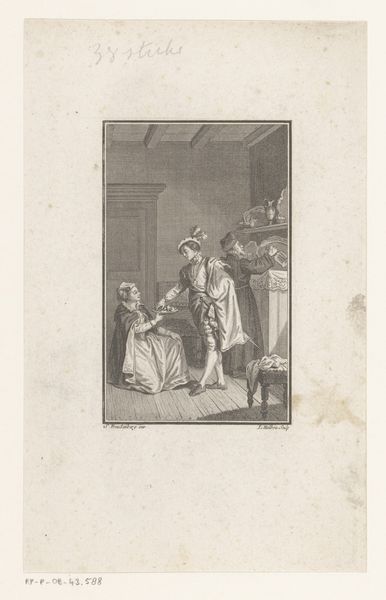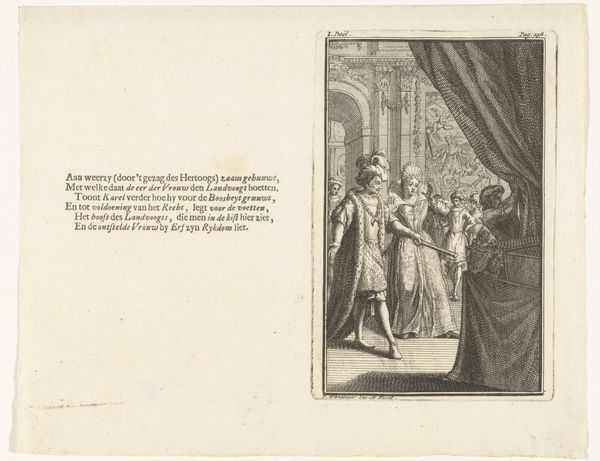
engraving
#
neoclacissism
#
old engraving style
#
figuration
#
line
#
history-painting
#
engraving
Dimensions: height 99 mm, width 62 mm
Copyright: Rijks Museum: Open Domain
Curator: This is "Kneeling Woman Kissing the Hand of Another Woman" created by F.B. Lorieux, dating back to 1791. It's an engraving, which gives it this beautiful, delicate linework. Editor: Immediately, the scene feels quite intimate, even theatrical. There's a certain vulnerability in the kneeling figure and an implied power dynamic between the two women that captivates me. Curator: Right, engravings during the late 18th century were often commissioned to illustrate scenes from popular literature or to document important historical events. Here, the artist Lorieux used this technique to create finely detailed prints intended for relatively wide distribution, revealing the increasing commodification of art at that time. Think of it in terms of production and distribution; engravings like this were a precursor to mass-produced imagery. Editor: Absolutely, and knowing the historical period, we have to consider the socio-political implications. A work like this invites us to question societal norms around female relationships and perhaps, the very nature of desire in a world heavily regulated by patriarchal structures. I am drawn to its subtle, coded narrative of identity within rigid class structures. Curator: Note, also, how the artist uses line quality to suggest different textures—the crisp folds of the clothing versus the smoothness of the skin. It’s this deliberate choice of the material that allows such effective story-telling through accessible visual means, shaping the aesthetic taste of the time. Editor: I am inclined to agree; furthermore, the question posed within the image itself “Mademoiselle de Brumont, are you sure you’re not a young man?” opens the door to interpretations that challenge traditional gender roles. This ambiguity speaks volumes within its historical context. The narrative resists a simple reading; is it a performance? A subversion? Or something more personal? Curator: Exactly, the choice of engraving as a means of production reveals something profound about artistic labor itself, as it connects the "high art" scene to a craft that enabled wider access. Editor: For me, this image isn't merely a window into the past; it encourages contemporary reflections on queer representation and the politics of identity. Curator: And by understanding its mode of production we recognize how artworks such as these both mirrored and helped construct ideas of taste and class in the era. Editor: I appreciate how the artwork creates an intimate historical bridge that helps us confront lingering questions surrounding power, sexuality, and identity.
Comments
No comments
Be the first to comment and join the conversation on the ultimate creative platform.
